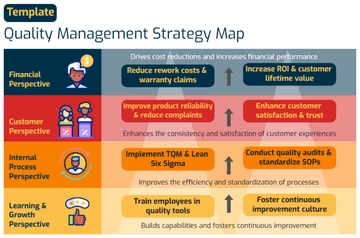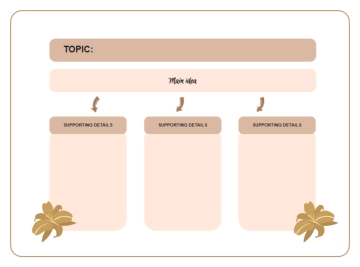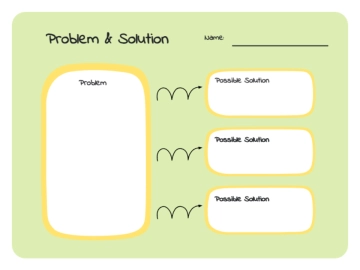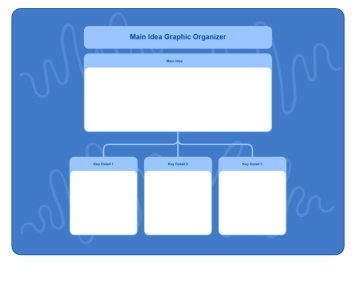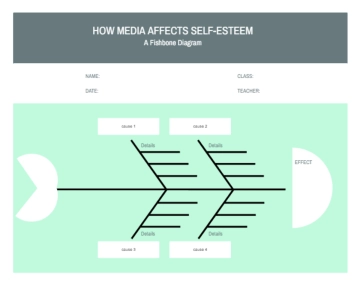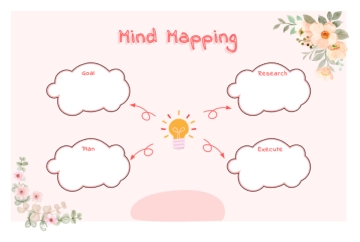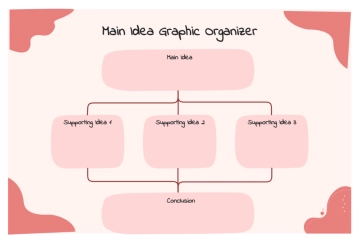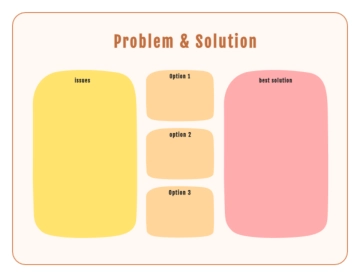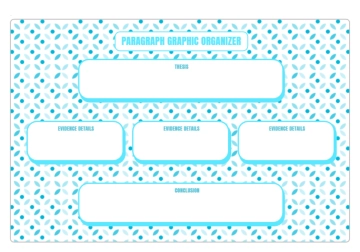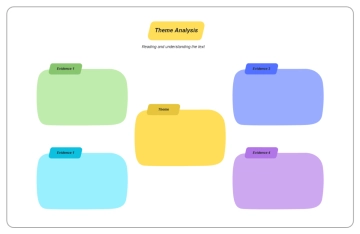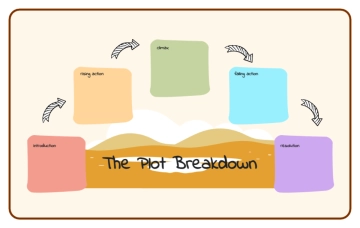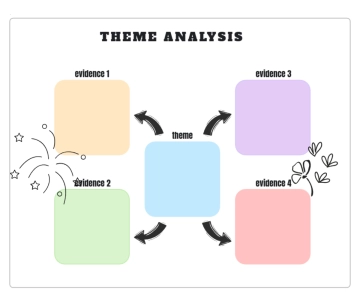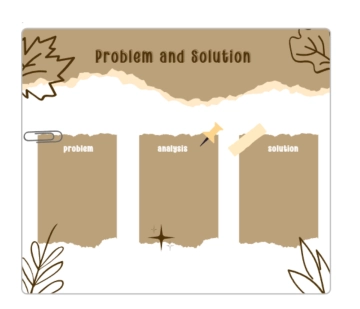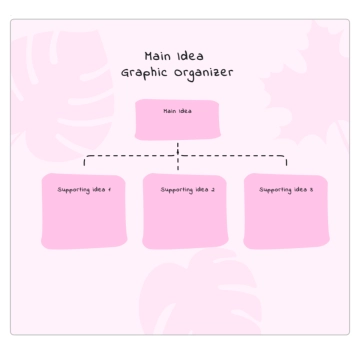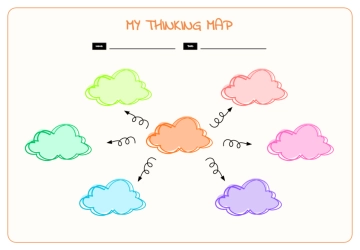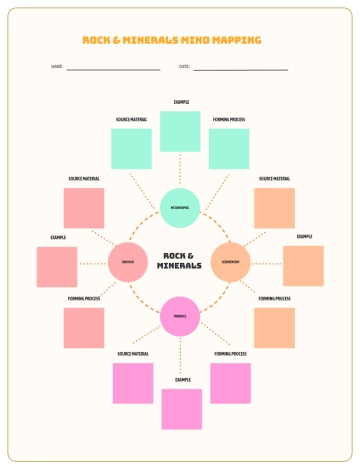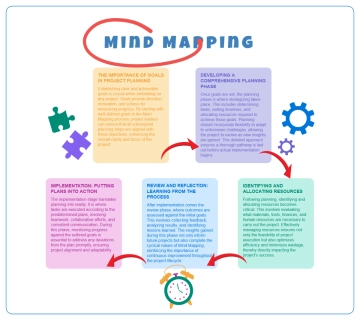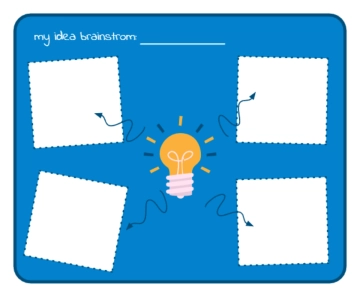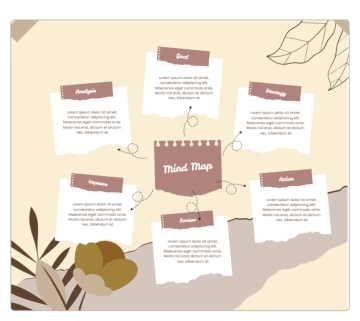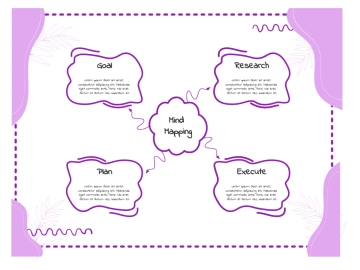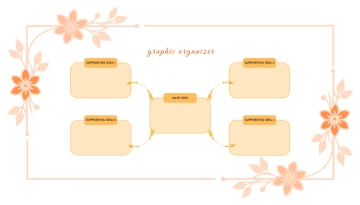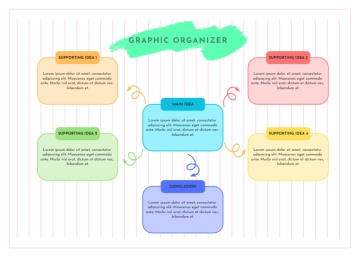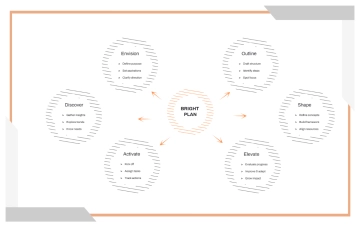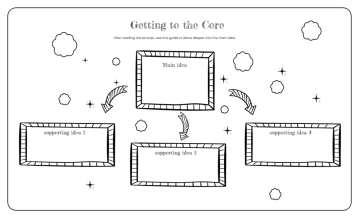Free Non-Profit Strategy Plan
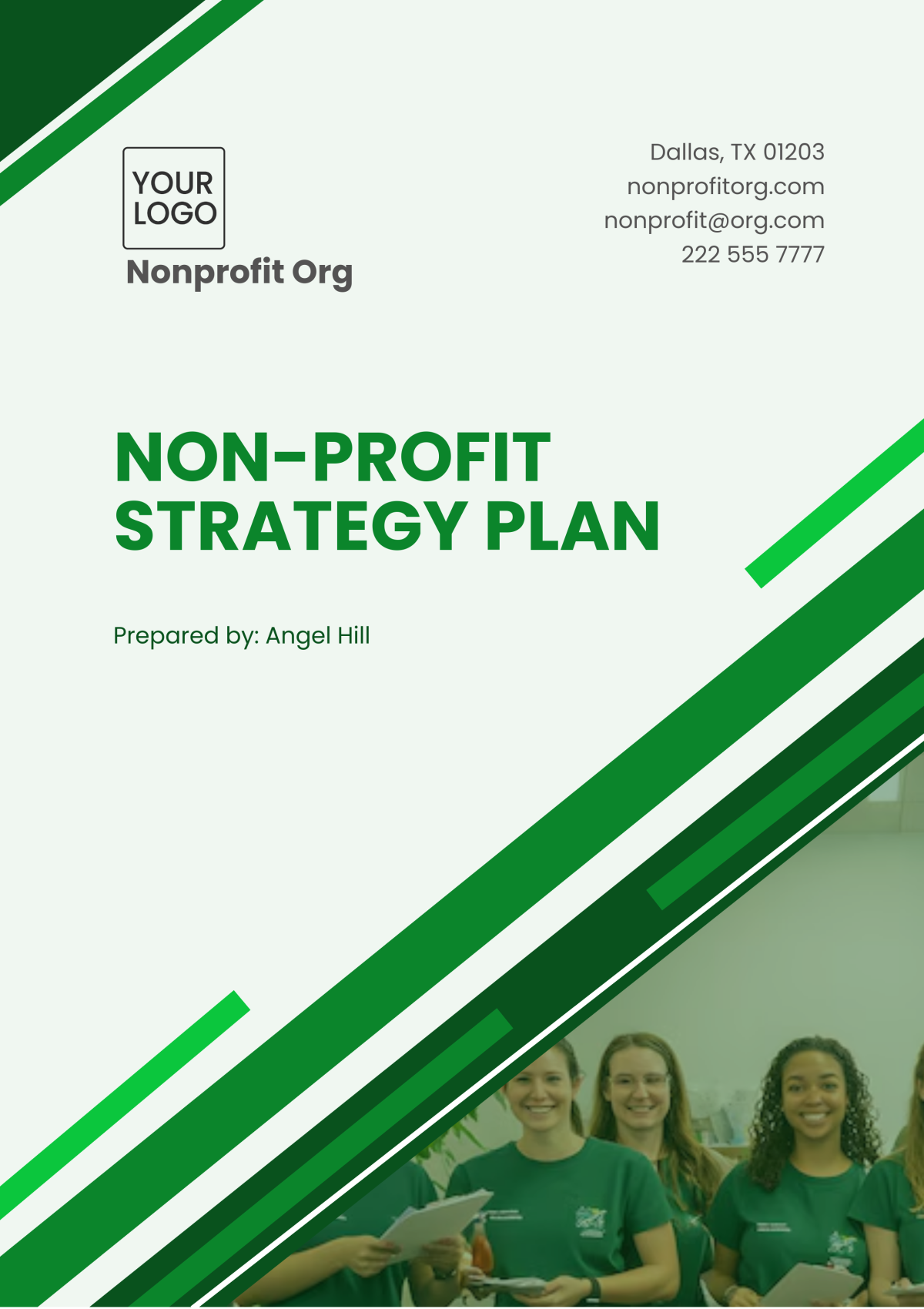
[Your Company Name] | Strategy Plan 2050-2060
I. Executive Summary
This Non-Profit Strategy Plan for [Your Company Name] provides a comprehensive framework for guiding the organization’s growth and impact from 2050 through 2060. As we navigate a rapidly evolving global landscape, this plan articulates our vision, mission, and strategic objectives, focusing on maximizing our effectiveness in addressing critical social, economic, and environmental issues. With an emphasis on sustainable development, innovative solutions, and strategic partnerships, we aim to create a profound and lasting impact on underserved communities worldwide. Our approach includes expanding program services, enhancing financial stability, strengthening partnerships, and investing in organizational development.
II. Organizational Overview
A. Mission and Vision
1. Mission
[Your Company Name] is dedicated to transforming lives and empowering marginalized communities through a holistic approach to social justice. Our mission is to provide essential services, advocate for human rights, and promote inclusive development. We focus on alleviating poverty, advancing education, ensuring healthcare access, and fostering environmental sustainability. Our commitment extends to leveraging cutting-edge technologies and fostering global collaborations to drive systemic change.
2. Vision
By 2060, [Your Company Name] envisions a world where every individual, regardless of their background, has equitable access to opportunities and resources necessary for a fulfilling life. Our vision is a society where systemic barriers are dismantled, enabling marginalized populations to thrive economically, socially, and environmentally. We aspire to be at the forefront of global change, shaping a future characterized by sustainability, equity, and inclusive growth.
B. Core Values
The values that underpin our operations and strategic initiatives include:
Integrity – Upholding the highest standards of transparency, accountability, and ethical conduct in all our endeavors.
Empowerment – Enabling individuals and communities to achieve self-reliance and realize their full potential through capacity-building and support.
Collaboration – Building effective partnerships with stakeholders across sectors to leverage resources, expertise, and influence.
Sustainability – Prioritizing long-term environmental, social, and economic sustainability in all our projects and operations.
Innovation – Continuously exploring and implementing creative solutions to address complex social challenges and improve program outcomes.
C. History and Milestones
[Your Company Name] has a distinguished history of impact and growth since its founding. Key milestones include:
[2050] Established a pioneering global initiative to combat child malnutrition, which has since expanded to [15] countries.
[2052] Implemented a comprehensive digital education program reaching [500,000] students in remote and underserved regions.
[2054] Formed strategic alliances with major international organizations, enhancing our ability to address global challenges collaboratively.
[2056] Launched a successful climate resilience project that has reduced vulnerability in [200] communities globally.
[2058] Introduced a new impact measurement framework, leading to a [25%] increase in program effectiveness and beneficiary satisfaction.
III. Strategic Objectives (2050-2060)
A. Expansion of Program Services
1. Geographic Expansion
Our goal is to significantly broaden our geographic reach to address pressing needs in additional underserved regions. By 2060, [Your Company Name] aims to have a presence in [20] new countries, including high-priority regions such as Southeast Asia, Sub-Saharan Africa, and remote areas in South America. This expansion will be executed through:
Local Partnerships: Collaborating with local NGOs, community organizations, and government agencies to establish a foothold and ensure culturally relevant and effective program implementation.
Feasibility Studies: Conducting comprehensive assessments to evaluate the needs, opportunities, and potential challenges in target regions. These studies will guide the development of tailored programs and strategies.
Phased Rollouts: Implementing programs in phases to manage resources effectively and adapt to local conditions, ensuring sustainable and scalable growth.
2. Enhanced Program Delivery
Improving the efficiency and impact of our existing programs will be a core focus. We will:
Conduct Regular Needs Assessments: Utilize data and feedback from beneficiaries and stakeholders to identify evolving needs and adapt programs accordingly.
Optimize Resource Allocation: Implement data-driven approaches to allocate resources more effectively, ensuring that funds and materials are directed where they can make the greatest impact.
Integrate Technology: Utilize digital platforms for remote training, online education, and mobile health services, which will enhance access to our programs and improve service delivery. For example, we will develop mobile apps that provide educational resources and health information to underserved populations.
3. Increased Focus on Climate Action
Addressing climate change is crucial for the well-being of vulnerable communities. We will:
Develop Climate Resilience Initiatives: Implement projects aimed at reducing carbon emissions, promoting sustainable agriculture, and enhancing community preparedness for climate-related disasters.
Promote Reforestation: Launch reforestation campaigns to restore degraded lands, improve air quality, and support biodiversity.
Educate Communities: Provide training and resources on climate adaptation strategies, helping communities to mitigate and respond to environmental challenges.
B. Financial Sustainability
1. Diversified Funding Sources
To ensure long-term financial stability, [Your Company Name] will:
Expand Corporate Partnerships: Develop relationships with a diverse range of private sector organizations. By 2060, our goal is to secure partnerships with [10] major corporations, leveraging their expertise, resources, and networks.
Increase Grant Funding: Pursue larger and more diverse grants from government bodies, foundations, and international agencies. We will establish dedicated grant writing teams and build relationships with grant-making organizations to secure funding.
Enhance Donor Engagement: Strengthen our individual donor program through targeted campaigns, personalized communication, and donor recognition initiatives. Our objective is to increase individual donations by [50%] over the next decade.
Build an Endowment Fund: Create and grow an endowment fund that will cover [15%] of our annual operating costs, providing a stable financial foundation for the future.
Year | New Corporate Partners | Grant Funding (in millions) | Individual Donations (in millions) | Endowment Fund (in millions) |
|---|---|---|---|---|
2050 | [3] | [$5] | [$1.5] | [$10] |
2055 | [6] | [$7] | [$3.0] | [$25] |
2060 | [10] | [$10] | [$5.0] | [$50] |
2. Cost-Effective Operations
To reduce operational costs, [Your Company Name] will:
Adopt Lean Management Practices: Implement processes that minimize waste and maximize efficiency. This includes streamlining administrative functions, optimizing supply chain management, and leveraging technology to reduce overhead.
Invest in Renewable Energy: Transition to renewable energy sources for our offices and facilities, which will reduce energy costs and support our sustainability goals.
Utilize Cloud-Based Systems: Move to cloud-based solutions for document management, communication, and project tracking to improve efficiency and reduce costs associated with physical infrastructure.
C. Strengthening Partnerships and Collaborations
1. Strategic Alliances
[Your Company Name] will:
Build Long-Term Relationships: Develop enduring partnerships with [50] local and international entities, including NGOs, government agencies, and community groups. These alliances will enhance our ability to deliver impactful programs and achieve shared goals.
Share Best Practices: Engage in knowledge exchange with partners to learn from successful models and incorporate effective strategies into our programs.
2. Public-Private Partnerships (PPP)
We will:
Establish Formal PPPs: Create strategic public-private partnerships to leverage resources and expertise. These partnerships will focus on areas such as education, healthcare, and infrastructure development. By [2060], our aim is to have formal PPPs in place in at least [10] regions, contributing to the scale and sustainability of our initiatives.
Collaborate on Innovative Projects: Work with private sector partners to pilot new solutions and technologies that can be scaled and replicated across different contexts.
3. Community Engagement
[Your Company Name] will:
Create Local Advisory Boards: Establish advisory boards in target communities to provide input on program design and implementation, ensuring that initiatives are culturally appropriate and effectively address local needs.
Involve Beneficiaries in Program Design: Engage community members in the development and evaluation of programs to ensure they are tailored to their needs and preferences.
Offer Leadership Training: Provide training and resources to local leaders to strengthen their capacity to manage and sustain community-driven projects.
IV. Organizational Development
A. Governance and Leadership
1. Board Development
To enhance the effectiveness of our governance structure, [Your Company Name] will:
Expand the Board: Increase the size of the board of directors to include professionals with expertise in technology, finance, environmental sustainability, and global development. This will bring diverse perspectives and skills to our leadership team.
Promote Diversity: Ensure that the board reflects a diverse range of experiences, backgrounds, and geographical perspectives. Our goal is to achieve a [30%] increase in board diversity by [2060].
2. Leadership Training
We will:
Implement Development Programs: Introduce comprehensive leadership training programs for senior management and emerging leaders. These programs will focus on strategic decision-making, ethical leadership, and global best practices in non-profit management.
Foster a Learning Culture: Encourage continuous professional development and knowledge sharing among leaders to keep pace with evolving trends and challenges in the non-profit sector.
B. Human Resources
1. Talent Acquisition and Retention
To attract and retain top talent, [Your Company Name] will:
Enhance Recruitment Strategies: Develop targeted recruitment campaigns to attract skilled professionals in social work, environmental sciences, and digital innovation.
Offer Competitive Benefits: Provide competitive salaries, comprehensive benefits packages, and opportunities for career advancement to retain talented staff.
Create a Supportive Work Environment: Foster a positive and inclusive work culture that values employee contributions and promotes work-life balance.
2. Volunteer Engagement
Our approach to volunteer engagement includes:
Expand the Volunteer Network: Increase our volunteer base by [50%] over the next decade, focusing on skilled professionals such as doctors, engineers, and teachers.
Enhance Training Programs: Develop robust training programs to equip volunteers with the skills and knowledge needed to contribute effectively to our programs.
Recognize Contributions: Implement recognition and reward programs to acknowledge the valuable contributions of our volunteers and encourage continued involvement.
C. Technology and Innovation
1. Digital Transformation
[Your Company Name] will:
Adopt Cloud-Based Solutions: Transition to cloud-based platforms for all administrative, communication, and reporting functions. This will enhance operational efficiency, facilitate remote work, and improve data accessibility.
Invest in Cybersecurity: Implement robust cybersecurity measures to protect organizational data and ensure the privacy and security of beneficiary information.
2. Innovative Program Delivery
We will:
Leverage Emerging Technologies: Integrate technologies such as telemedicine, e-learning platforms, and mobile applications into our programs. These tools will enhance our ability to deliver services in remote and underserved areas.
Pilot New Solutions: Test and evaluate innovative approaches to program delivery, such as virtual reality for education and mobile health diagnostics, to identify and scale effective solutions.
V. Monitoring and Evaluation
A. Key Performance Indicators (KPIs)
To assess the progress and effectiveness of our strategic initiatives, [Your Company Name] will track the following KPIs:
Objective | KPI | Target by 2060 |
|---|---|---|
Geographic Expansion | Number of new countries with operations | [20] new countries |
Program Efficiency | Percentage of programs meeting impact targets | [90%] |
Climate Action | Reduction in carbon footprint | [30%] |
Volunteer Growth | Increase in volunteer participation | [50%] |
Financial Stability | Annual operational costs covered by endowment | [15%] |
B. Impact Assessment
We will conduct regular impact assessments to evaluate the long-term benefits of our programs. This includes:
Data Collection: Gather quantitative and qualitative data from beneficiaries, staff, and stakeholders to assess program outcomes and impact.
Site Visits: Perform on-site evaluations to observe program implementation and gather feedback from participants.
External Evaluations: Collaborate with independent evaluators to provide an objective analysis of program effectiveness and identify areas for improvement.
C. Reporting and Transparency
[Your Company Name] is committed to transparency and accountability. We will:
Produce Annual Reports: Develop detailed annual reports that outline our financial performance, program outcomes, and organizational impact. These reports will be made publicly available and shared with all stakeholders.
Share Best Practices: Highlight successful initiatives and lessons learned in our reports to provide valuable insights and promote knowledge sharing within the non-profit sector.
VI. Risk Management
A. Identifying Risks
Potential risks that could impact our strategic objectives include:
Economic Downturns: Financial instability due to global economic fluctuations that could affect funding and resource availability.
Policy Changes: Changes in government policies or regulations that impact our operations or funding sources.
Natural Disasters: Disasters such as earthquakes, floods, and hurricanes that could disrupt program delivery and affect communities.
Cybersecurity Threats: Risks related to data breaches and cyber-attacks that could compromise sensitive information.
B. Mitigation Strategies
To address these risks, [Your Company Name] will:
Develop Contingency Plans: Create comprehensive contingency plans for potential economic downturns, policy changes, and natural disasters. This includes maintaining reserve funds, diversifying funding sources, and establishing emergency response protocols.
Invest in Cybersecurity: Implement advanced cybersecurity measures to protect organizational data and ensure the integrity of our systems. This includes regular security audits, employee training, and data encryption.
Engage with Policymakers: Monitor policy developments and engage with policymakers to advocate for favorable conditions for our operations and address potential regulatory challenges.
- 100% Customizable, free editor
- Access 1 Million+ Templates, photo’s & graphics
- Download or share as a template
- Click and replace photos, graphics, text, backgrounds
- Resize, crop, AI write & more
- Access advanced editor
Develop strategic goals with the Non-Profit Strategy Plan Template from Template.net. This editable and customizable template guides you in creating a comprehensive strategy. Customize it in our Ai Editor Tool to align with your non-profit’s vision and objectives. Drive your mission forward—build your strategic plan with confidence today!
You may also like
- Finance Plan
- Construction Plan
- Sales Plan
- Development Plan
- Career Plan
- Budget Plan
- HR Plan
- Education Plan
- Transition Plan
- Work Plan
- Training Plan
- Communication Plan
- Operation Plan
- Health And Safety Plan
- Strategy Plan
- Professional Development Plan
- Advertising Plan
- Risk Management Plan
- Restaurant Plan
- School Plan
- Nursing Home Patient Care Plan
- Nursing Care Plan
- Plan Event
- Startup Plan
- Social Media Plan
- Staffing Plan
- Annual Plan
- Content Plan
- Payment Plan
- Implementation Plan
- Hotel Plan
- Workout Plan
- Accounting Plan
- Campaign Plan
- Essay Plan
- 30 60 90 Day Plan
- Research Plan
- Recruitment Plan
- 90 Day Plan
- Quarterly Plan
- Emergency Plan
- 5 Year Plan
- Gym Plan
- Personal Plan
- IT and Software Plan
- Treatment Plan
- Real Estate Plan
- Law Firm Plan
- Healthcare Plan
- Improvement Plan
- Media Plan
- 5 Year Business Plan
- Learning Plan
- Marketing Campaign Plan
- Travel Agency Plan
- Cleaning Services Plan
- Interior Design Plan
- Performance Plan
- PR Plan
- Birth Plan
- Life Plan
- SEO Plan
- Disaster Recovery Plan
- Continuity Plan
- Launch Plan
- Legal Plan
- Behavior Plan
- Performance Improvement Plan
- Salon Plan
- Security Plan
- Security Management Plan
- Employee Development Plan
- Quality Plan
- Service Improvement Plan
- Growth Plan
- Incident Response Plan
- Basketball Plan
- Emergency Action Plan
- Product Launch Plan
- Spa Plan
- Employee Training Plan
- Data Analysis Plan
- Employee Action Plan
- Territory Plan
- Audit Plan
- Classroom Plan
- Activity Plan
- Parenting Plan
- Care Plan
- Project Execution Plan
- Exercise Plan
- Internship Plan
- Software Development Plan
- Continuous Improvement Plan
- Leave Plan
- 90 Day Sales Plan
- Advertising Agency Plan
- Employee Transition Plan
- Smart Action Plan
- Workplace Safety Plan
- Behavior Change Plan
- Contingency Plan
- Continuity of Operations Plan
- Health Plan
- Quality Control Plan
- Self Plan
- Sports Development Plan
- Change Management Plan
- Ecommerce Plan
- Personal Financial Plan
- Process Improvement Plan
- 30-60-90 Day Sales Plan
- Crisis Management Plan
- Engagement Plan
- Execution Plan
- Pandemic Plan
- Quality Assurance Plan
- Service Continuity Plan
- Agile Project Plan
- Fundraising Plan
- Job Transition Plan
- Asset Maintenance Plan
- Maintenance Plan
- Software Test Plan
- Staff Training and Development Plan
- 3 Year Plan
- Brand Activation Plan
- Release Plan
- Resource Plan
- Risk Mitigation Plan
- Teacher Plan
- 30 60 90 Day Plan for New Manager
- Food Safety Plan
- Food Truck Plan
- Hiring Plan
- Quality Management Plan
- Wellness Plan
- Behavior Intervention Plan
- Bonus Plan
- Investment Plan
- Maternity Leave Plan
- Pandemic Response Plan
- Succession Planning
- Coaching Plan
- Configuration Management Plan
- Remote Work Plan
- Self Care Plan
- Teaching Plan
- 100-Day Plan
- HACCP Plan
- Student Plan
- Sustainability Plan
- 30 60 90 Day Plan for Interview
- Access Plan
- Site Specific Safety Plan
